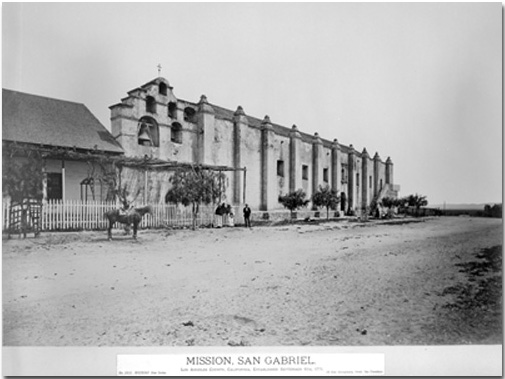
Material for the study of the history of photography derives from the Albert Boni collection of books and photographs from the mid-19th century to the present. It includes examples of such processes as calotype, cyanotype, and daguerreotype and works by Julia Margaret Cameron, Eadweard Muybridge, William Henry Fox Talbot, and Carleton E. Watkins. Recent photographers include Berenice Abbott, Ansel Adams, Will Connell, Burton Holmes, Barbara Morgan, Otto Rothschild, Brett Weston, and Edward Weston. California is represented also in the work of Adelbert Bartlett, Louis Fleckenstein, Charles F. Lummis, C. C. Pierce, Ernest Pratt, and Henry Hebard West.
For documentary sources, the Department has formed an extensive collection of photographs on Southern California from the 1880s to the early 1950s. The Department houses the photographic archive of the Los Angeles Times (1893 to the present, with the Times retaining the most recent five years) and the Los Angeles Daily News (1923 - 1954). There are also collections of late 19th and early 20th century Latin American and Near Eastern photographs
Louis Jacques Mandé Daguerre, 1787 - 1851. Historique et description des procédés du daguerréotype et du diorama rédigés par Daguerre, ornés du portrait de l'auteur, et augmentés de notes et d'observations par MM. Lerebours et Susse Frères. Paris: Susse frères, Lerebours, 1839. TR 16.1 D136h 1839 / TR 365 D15h 1839
Carleton E. Watkins, 1829 - 1916. Mission, San Gabriel, Los Angeles County, California, Established September 8, 1771. ca. 1882. Black and white photograph, scanned copy enlarged. Original 38 x 54 cm. Mounted 50 x 65 cm. No. 1212 Watkins's New Series, 26 Montgomery Street, San Francisco. Collection ***98 [use visible file]
Compare this image with the more romanticized one circulated as the cover of the nursery catalog in the Architecture & Landscape Architecture portion of the exhibit. The reality is evident in this photograph, but the romanticized myth held sway, such as descriptions by Helen Hunt Jackson: "Walled gardens with waving palms, sparkling fountains, rows of olive trees, broad vineyards, and orchards of all manner of fruits; over all, the sunny, delicious, winterless sky."
Western Publishing & Novelty Co. Mission San Gabriel Archangel, California [color postcard]. Los Angeles, 1940s? Number at head of title: P.63; code: 6A - H2622. In: Collection of California postcards, 1890 - . Collection 1351. Box 13
Barbara Brooks Morgan, 1900 - . Martha Graham: Sixteen Dances in Photographs. New York: Duell, Sloan and Pearce [1941]. TR16.8 .M821m
Morgan gave the Dept. archival prints of some of her famous images, including some published in this work.
Barbara Morgan was interviewed by the UCLA Oral History Program (unfinished, request from University Archives through Special Collections.)




